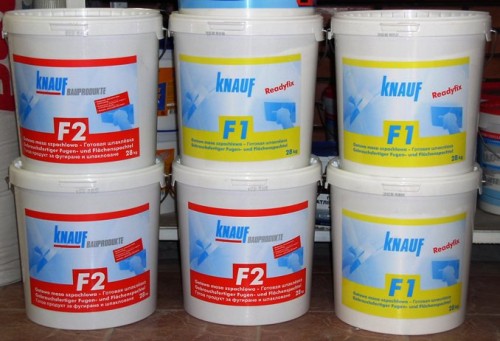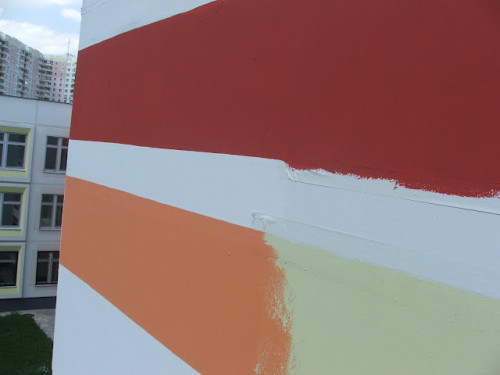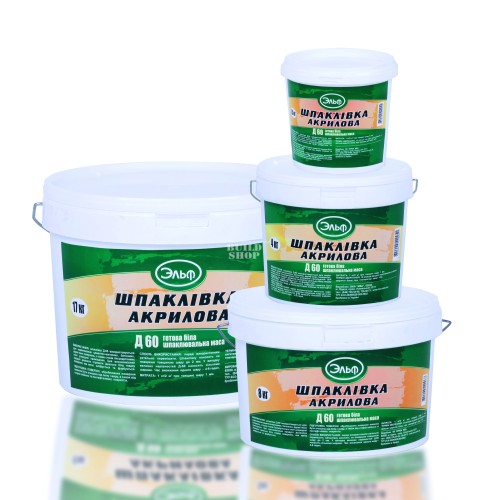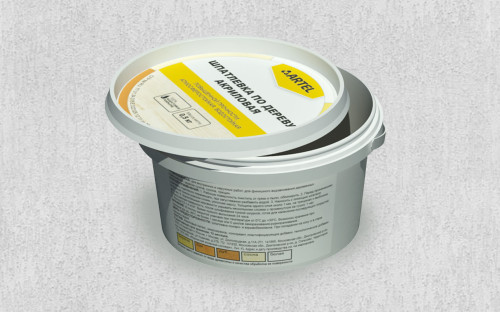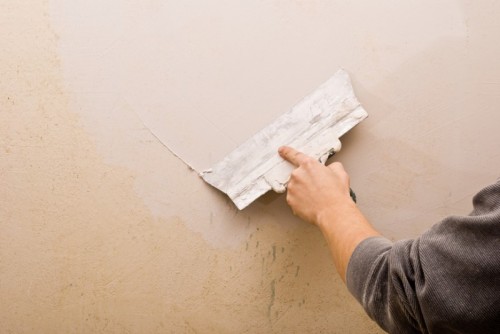
Acrylic putty: characteristics, advantages and disadvantages Building materials
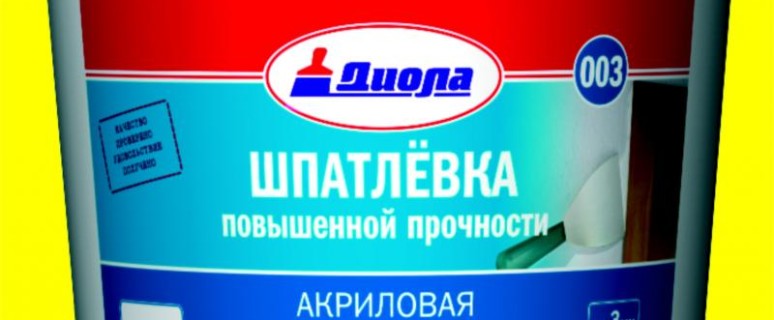
A well-known and popular product in the modern building market is an acrylic putty - one of the varieties of polymer finishing materials. We will tell about the properties, positive and negative qualities of such a substance in this article.
Content
The main characteristics of polymer putty
Polymer putty today are presented in the form of two main varieties - these are acrylic and latex materials. These two types of products are similar in their component composition and characteristics. The main distinguishing property of such finishing materials is that they are on sale in the form of a ready-to-use mass that does not need to be breeded with water or mix with any other solvents. So that such putty are not spoiled and kept all the necessary qualities, they need to be stored in accordance with the requirements declared by the manufacturer.
Distinctive properties of acrylic putty
As the main component in the composition of such a tool, acrylic is a synthetic substance with variable characteristics. Acrylic perfectly interacts with all other components of putty, as a result of which the mass is homogeneous, and after drying it forms a smooth, dense surface with a smooth texture. When using an acrylic putty for walls, it is possible to be sure that the coating does not crack and does not occur after the frozen.
Such formulations are several varieties. For example, the facade acrylic putty is most suitable for the facing of the exterior walls of the structure, as well as the floor in the house. The water-dispersion mass is used to finish concrete walls, as well as to close the shortcomings on wooden surfaces.
Depending on which components are part of the finishing material, the acrylic putty is divided into the finish and starting. The starting coating is used as a rough version for the purpose of masking various cracks, recesses and other levels of the level on the treated surface. The finish putty is needed for the final decorative finish.
Such products are also distinguished by the type of material to which it can be applied. Thus, the acrylic putty on the wood is designed to work with wood, some formulations are suitable for applying plasterboard, concrete, brick, metal and other surfaces.
There is also such a material as a universal acrylic putty, which can be used both for processing facades and for the design of walls indoors. The universal acrylic putty is suitable for the floor, as well as for processing various surfaces, regardless of the material from which they are made.
Among the consumers there are a large number of positive feedback on acrylic putty, and all due to the fact that such a material has a lot of advantages. Consider them more details:
- The plasticity of the material allows you to create a coating that is not scary of temperature differences, long-term impact of heat or cold, shock loads. Acrylic putty does not crack and does not appear.
- Water-repellent characteristics of such material also at the height, so that the walls of the building are reliably protected from dampness, mold and rotting.
- Working with acrylic putty does not represent any difficulties, because a homogeneous elastic mass is easily applied to any surface with a spatula. If it is necessary to cover the wall with a very thin and uniform layer of substance, you can dilute with a solvent putty and use the paintopult in the operation.
- For acrylic putty, such a property is also characteristic as a short time of frozen. It is necessary to work with this material quickly, because in the open container the mixture dries over 1 hour.
- It is easy to put on the wall fairly easily, you just need to carefully read the instructions for use before starting work. It is not necessary to have any additional skills and skills.
- The surface of the frozen decorative acrylic putty is polished by ordinary emery paper.
- Another indisputable positive quality of the material is its waterproof. Walls decorated with such a putty will not be filled and covered with fungus and mold. At the same time, the acrylic coating has vapor permeability, so the surface under it can "breathe", which again provides sufficient circulation of air and prevents the formation of dampness on the walls.
- Acrylic putty provides thermal insulation of the room, besides, it does not burn and is considered safe material in the event of a fire.
- The use of acrylic blends inside the residential premises is provided by the ecology of putty and its inability to allocate harmful substances into the surrounding space.
Now I would like to tell about the few shortcomings of such a material. One of the substantial minuses can be considered a high price of acrylic putty. However, the value of the material justifies its quality and durability, so those who do not want to save on excellent properties and long coating service life will prefer to buy an acrylic putty instead of a cheaper counterpart. Another negative quality of such a finish is the need for its careful grinding after drying. It is worth saying that during grinding into the surrounding air, a large number of fine dust falls, which can harm the respiratory system. In this regard, during such a work, it is simply necessary to protect the respiratory tract with a respirator or a special mask.
Features latex spacure
Similar in composition with acrylic putty is the latex mixture, the main component in which Latex performs. This type of material has high elasticity, which makes it even more durable, durable and resistant to external influences. Latex mass is suitable for working on a variety of surfaces, from wood to metal, moreover, it is possible to finish with any weather and ambient temperature. Latex putty do not crack, do not exude, do not give shrinkage.
In the sale of latex putty, as well as acrylic, arrive already in finished form and do not need self-preparation of the mixture. If you add a dye to the mass, the substance can give any hue that you like. The cost of this type of polymer putty is also quite high, but if you finish the finish of such a material, then you will not have to update the repair for a very long time.
Disadvantages and advantages of acrylic putty before plaster
Gypsum putty are at the moment very popular, this is due to mainly available to the cost. Planning to make repairs, it is important to decide in advance with the type of finishing material, weigh all the pros and cons and choose the most suitable option. Let's try to figure out what pros and cons has acrylic putty compared to the gypsum composition:
- Gypsum putty is most often used to finish the walls indoors, while universal acrylic mixtures can be used to design facades of buildings.
- Both types of materials perfectly cope with alignment of surfaces, close up of cracks, cracks, voids.
- Acrylic putty is waterproof and protects the wall from moisture and dampness. Gypsum coating, on the contrary, with ease absorbs water, so it can only be used in sufficiently dry rooms.
- Acrylic putty plastic, so it perfectly tolerates a sharp change of temperature, while maintaining its strength and not cracking. The gypsum mass is not so reliable, it does not withstand the temperature drops, forming cracks and crept.
- Gypsum putty possess better vapor permeability compared to polymer compositions. In the room, decorated with gypsum putty, there will always be optimal humidity, and the walls will not dance.
- As for the finishing process, the gypsum mass is more simple in use, it is easier to apply on the wall and is easier to grind.
- Gypsum is a natural substance, its composition does not include artificially created components. Gypsum putty can be considered completely eco-friendly and safe.
- Acrylic putty has a higher price compared to plaster, but polymer coatings are more reliable and durable, so high cost can be fully justified. However, many people with a little sufficient prefer a cheaper gypsum option.
- Acrylic mixtures are applied to the surface with a thin layer, so if the relief has significant differences, you will need to process the site several times. Gypsum putty can be applied immediately with a thick layer, so all the shortcomings on the surface are close at a time.
- In the process of grinding any of these types of putty, it is necessary to protect the respiratory tract from dust.
Sounds of using acrylic putty
- Acrylic putty must be applied based on the structure of the treated surface. Water-dispersion formulations are well suited for wood or concrete, since such putty have excellent water repellent properties. The facade putty is designed for the exterior decoration of buildings, its main quality is durability and high thermal insulation properties. Universal compositions are suitable for any surfaces both inside and outside the premises.
- When cladding the walls, it is possible to use water-dispersion putty, but it is hardly suitable for processing the ceiling. When finishing the ceiling, it is better to resort to the help of a more thick and dense mixture - such is considered a universal acrylic putty.
- Do not forget about the correct calculation of the consumption of the material. For finishing 1 m² of the surface with an acrylic putty, approximately 1-1.2 kg of material will be needed. The layer is obtained by a thickness of 1 mm - this layer will be quite enough for the waters of the wall. If the acrylic mixture is used for the external decoration of the buildings, the layer must be somewhat thicker, and the material consumption will be approximately 1.5 kg.
Rules for finishing walls acrylic putty
Fortunately, acrylic putty refers to those materials with which even a person without professional construction skills and experience can work. To apply the composition on the wall, it is necessary to use spatulas of different sizes, with which it will be conveniently coated with putty as large areas and hard-to-reach corners.
The first step in working with putty is the treatment of the wall by the ground. Primer will provide the material better grip with the wall. After the surface is processed by the primer, it is necessary to wait for it to dry, and then begin the process of splouth.
On packing with acrylic putty, as a rule, the conditions for working with the material, including information on the permissible ambient temperature are indicated. It is necessary to spend the shit of the walls in accordance with these recommendations.
Before getting to work, make sure that the wiring is isolated properly and that all rough processes are fully fulfilled. It is customary to start the finish finish from the ceiling, and then go to the walls.
The finishing process is nothing complicated. Initially, the mass is stirred to a homogeneous consistency, then take a small spatula and with it applies the composition to a large spatula. After that, the putty is evenly distributed over the working surface, making vertical and circular movements.
When the mass is completely dry, the surface you need to give smoothness. For this, putty grind out sandpaper with small grain. Then you can inspect the surface, reveal the shortcomings and correct them.
The acrylic putty layer should be thin, approximately 1 mm. A layer of more than 5 mm thick is often covered by cracks, so when disguised significant recesses, it is necessary to apply material several times, waiting for a complete drying of the coating before applying the next layer. If the strip from the spatula remains in the process of work on the wall, do not immediately correct them - so you will only spend over time. Similar flaws are easily corrected in the grinding process.




